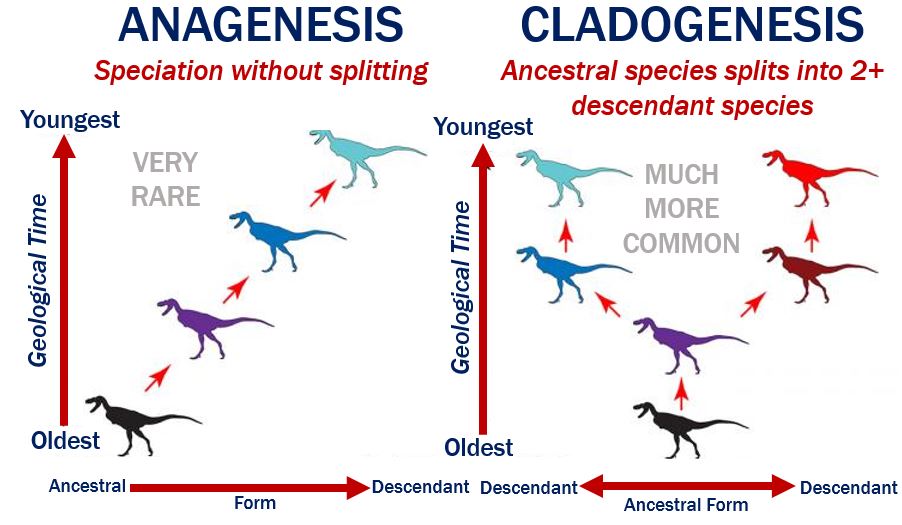Tyrannosaurs had extremely sensitive skin on their faces, which were covered in scales, similar to those of modern crocodiles, says a team of scientists that claims to have found a new species of tyrannosaur dinosaur. Their snouts were as sensitive to touch as our fingertips.
After pulling out the fossils from the muddy banks of a river in Montana, Professor Jason R. Moore, from University of New Mexico Honors College, and colleagues from Australia, Wisconsin, Louisiana and Montana analyzed the new species’ facial bones.
Prof. Moore and colleagues wrote about their research and findings in the Nature journal Scientific Reports. Their article – A new tyrannosaur with evidence for anagenesis and crocodile-like facial sensory system – was published online on March 30th, 2017.
“Being a tyrannosaur, they had really small arms. They wouldn’t be able to interact with their environment with their hands the way mammals do — find food, build nests, tend to eggs and young. In order to do these things, Daspletosaurus needed to use its feet or head.”
“The discovery and analysis of the tyrannosaur shows that the dinosaur had a developed face sensitivity similar to the sensitivity in our finger tips, suggesting it could use its snout for all those complex ecological interactions, similar to the way crocodiles do today.”
 The fossils’ bone texture suggests large areas of big scales and subordinate regions of armor-like skin. The craniofacial epidermis of Daspletosaurus horneri was based on comparison with birds and crocodylians, its closest living relatives. (Image: nature.com. Credit: Dino Pulerà)
The fossils’ bone texture suggests large areas of big scales and subordinate regions of armor-like skin. The craniofacial epidermis of Daspletosaurus horneri was based on comparison with birds and crocodylians, its closest living relatives. (Image: nature.com. Credit: Dino Pulerà)
The scientists have identified and named the new tyrannosaur species Daspletosaurus horneri (Horner’s Frightful Lizard). It is named after John (Jack) R. Horner, former curator at the Museum of the Rockies in Bozeman, Montana.
The researchers say that their latest findings in Montana are key to the studies of dinosaur evolution.
Prof. Moore said:
“Montana, similar to many Rocky Mountain states, has lots of rock exposed at the right time and right environment to contain dinosaurs.”
“The fossils are found preserved in ancient river channels and flood plains. If you know what you’re looking for, they are widespread.”
Tyrannosaurs had no lips and scaly face
Apart from finding a new tyrannosaur species, the scientific team says that its research provides new information about the life appearance of tyrannosaurs, particularly the face, and its mode of evolution.
They found evidence of an unusual non-branching type of evolution in tyrannosaurs – Anagenesis – and also discovered that tyrannosaurs had an extremely touch-sensitive snout, a scaly face, and no lips.
 The fossilized remains of Daspletosaurus horneri were hauled up in 2001 by a mule-drawn sled. (Image: eurekalert.org. Credit: David Varricchio)
The fossilized remains of Daspletosaurus horneri were hauled up in 2001 by a mule-drawn sled. (Image: eurekalert.org. Credit: David Varricchio)
Study leader, Thomas Carr, who works at Carthage College’s Department of Biology in Wisconsin, said:
“Daspletosaurus horneri was the youngest, and last, of its lineage that lived after its closest relative, D. torosus, which is found in Alberta, Canada.”
“The geographic proximity of these species and their sequential occurrence suggests that they represent a single lineage where D. torosus has evolved into D. horneri.”
Prof. Moore added:
“One of the difficulties in demonstrating this style of evolution is establishing that the different species don’t overlap in time. The new radiometric dates we measured help support this temporal separation between D. torosus and D. horneri.”
Tyrannosaurs evolved slowly
The study confirmed that the ages of the two species showed that the dinosaur’s evolution occurred slowly over a period of 2.3 million years.
The researchers concluded that tyrannosaurs’ faces were covered in a lipless mask of big flat scales and large patches of armor-like skin, after comparing the skulls of tyrannosaurs with those of mammals, birds and crocodylians (also spelled: crocodilians).
 The team’s research found evidence for anagenesis – a rare, non-branching type of evolution in tyrannosaurs. (Image: adapted from media.eurekalert.org. Credit for original image: Thomas D. Carr)
The team’s research found evidence for anagenesis – a rare, non-branching type of evolution in tyrannosaurs. (Image: adapted from media.eurekalert.org. Credit for original image: Thomas D. Carr)
Co-author Professor Jayc Sedlmayr, who works at the Louisiana State University Health Sciences Center New Orleans, explained:
“Much of our research … was generated from lab based comparative anatomy, where you get arms deep in ‘blood and guts’ dissecting birds–living dinosaurs and crocodylians – their closest living relatives.”
Prof. Carr explained:
“It turns out that tyrannosaurs are identical to crocodylians in that the bones of their snouts and jaws are rough, except for a narrow band of smooth bone along the tooth row. We did not find any evidence for lips in tyrannosaurs: the rough texture covered by scales extends nearly to the tooth row, providing no space for lips.”
“However, we did find evidence for other types of skin on the face, including areas of extremely coarse bone that supported armor-like skin on the snout and on the sides of the lower jaws. The armor-like skin would have protected tyrannosaurs from abrasions, perhaps sustained when hunting and feeding.”
Tyrannosaurs with thick scaly faces like appreciated the most tender toucheshttps://t.co/VNtgJIskzt #fossilFriday #tyrannosaurs pic.twitter.com/lJQW1njLwH
— 2 New Things (@2NewThings) March 31, 2017
The scientists found that tyrannosaurs’ jaws and snout were penetrated by several small nerve opening, allowing hundreds of nerve branches to innervate the skin, giving it super-sensitive skin.
According to Sedlmayr, this sensitivity forms part of a larger evolutionary story:
“The trigeminal nerve has an extraordinary evolutionary history of developing into wildly different ‘sixth senses’ in different vertebrates, such as sensing magnetic fields for bird migration, electroreception for predation in the platypus bill or the whisker pits of dolphins, sensing infrared in pit vipers to identify prey, guiding movements in mammals through the use of whiskers, sensing vibrations through the water by alligators and turning the elephant trunk into a sensitive ‘hand’ similar to what has been done to the entire face of tyrannosaurs.”
In an Abstract that preceded the main article, the authors wrote:
“Daspletosaurus was an important apex predator in the late Campanian dinosaur faunas of Laramidia; its absence from later units indicates it was extinct before Tyrannosaurus rex dispersed into Laramidia from Asia.”
“In addition to its evolutionary implications, the texture of the facial bones of the new taxon, and other derived tyrannosauroids, indicates a scaly integument with high tactile sensitivity. Most significantly, the lower jaw shows evidence for neurovasculature that is also seen in birds.”
Video – tyrannosaur had sensitive skin
Daspletosaurus horneri, a new species of tyrannosaur, had an extremely sensitive snout.

